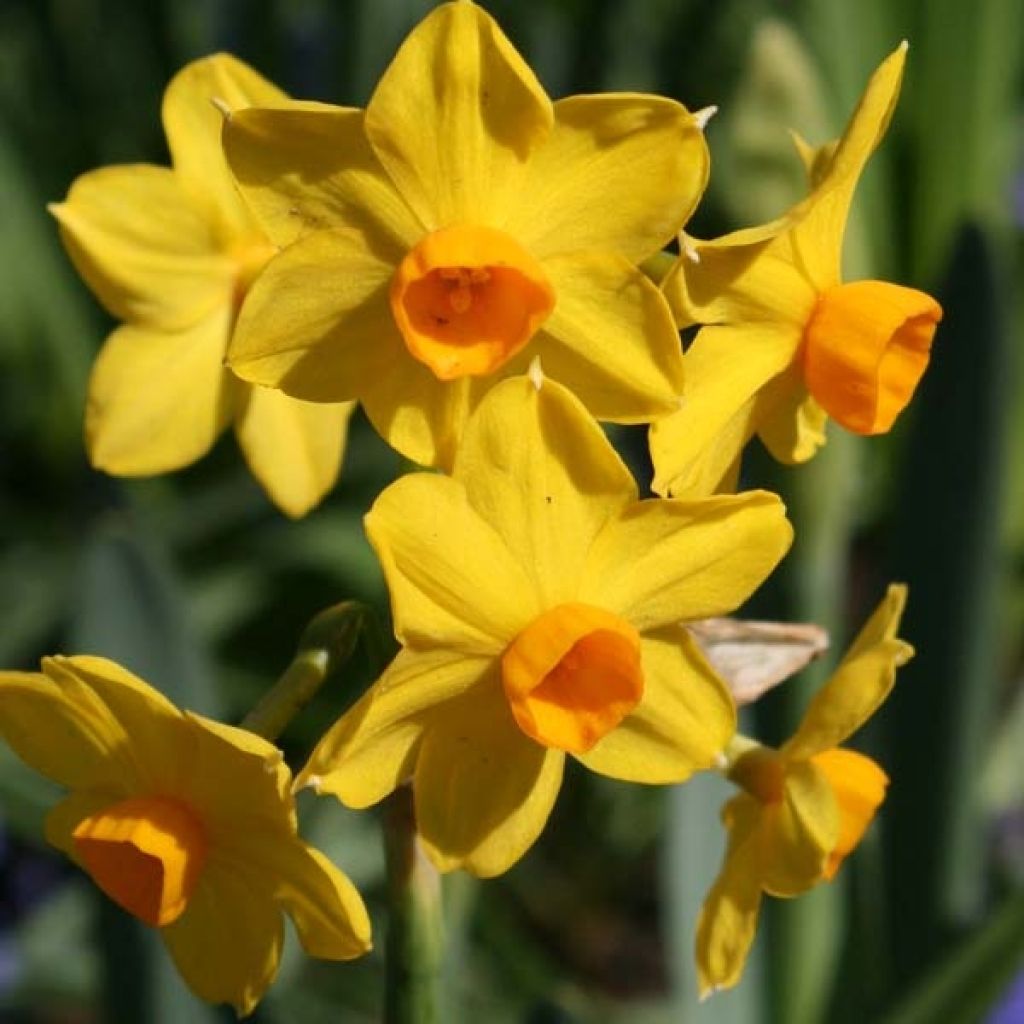

Narcisse Grand Soleil d Or
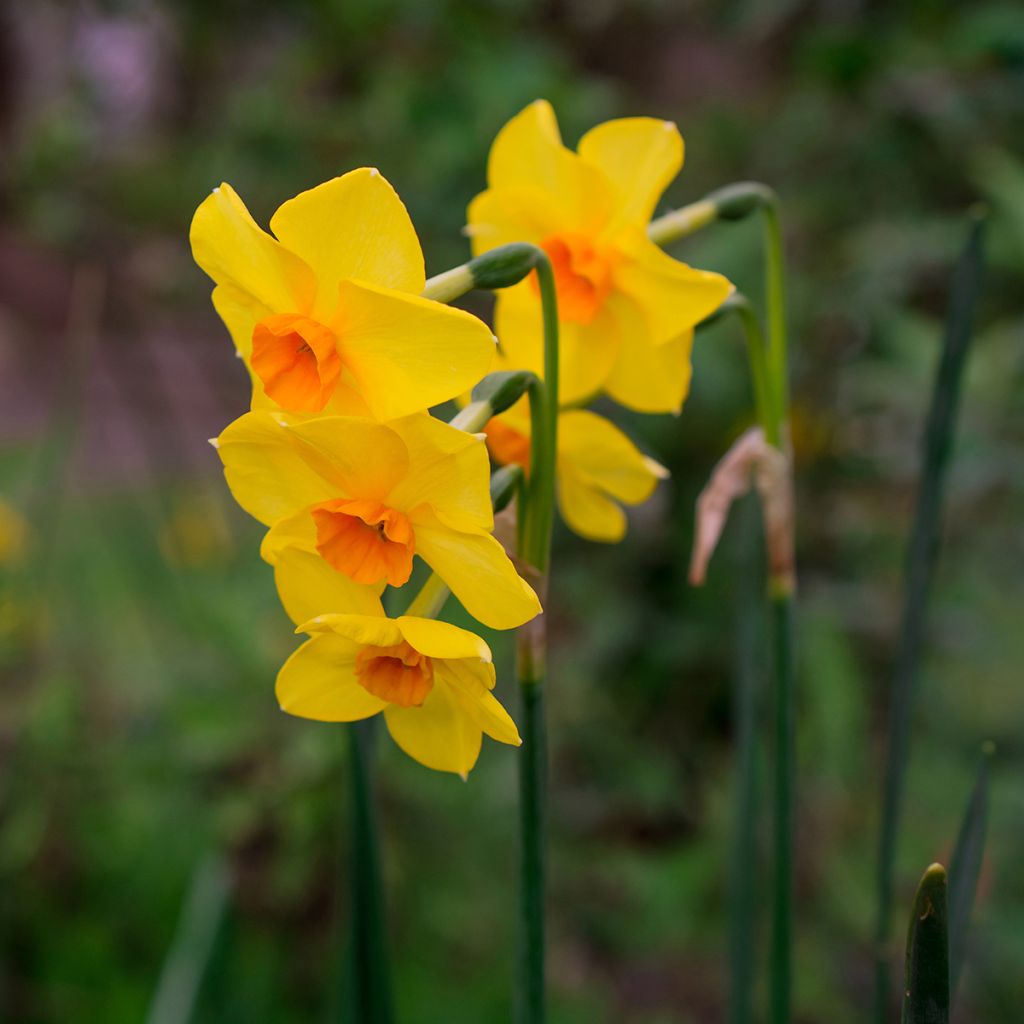

Narcisse Grand Soleil d Or
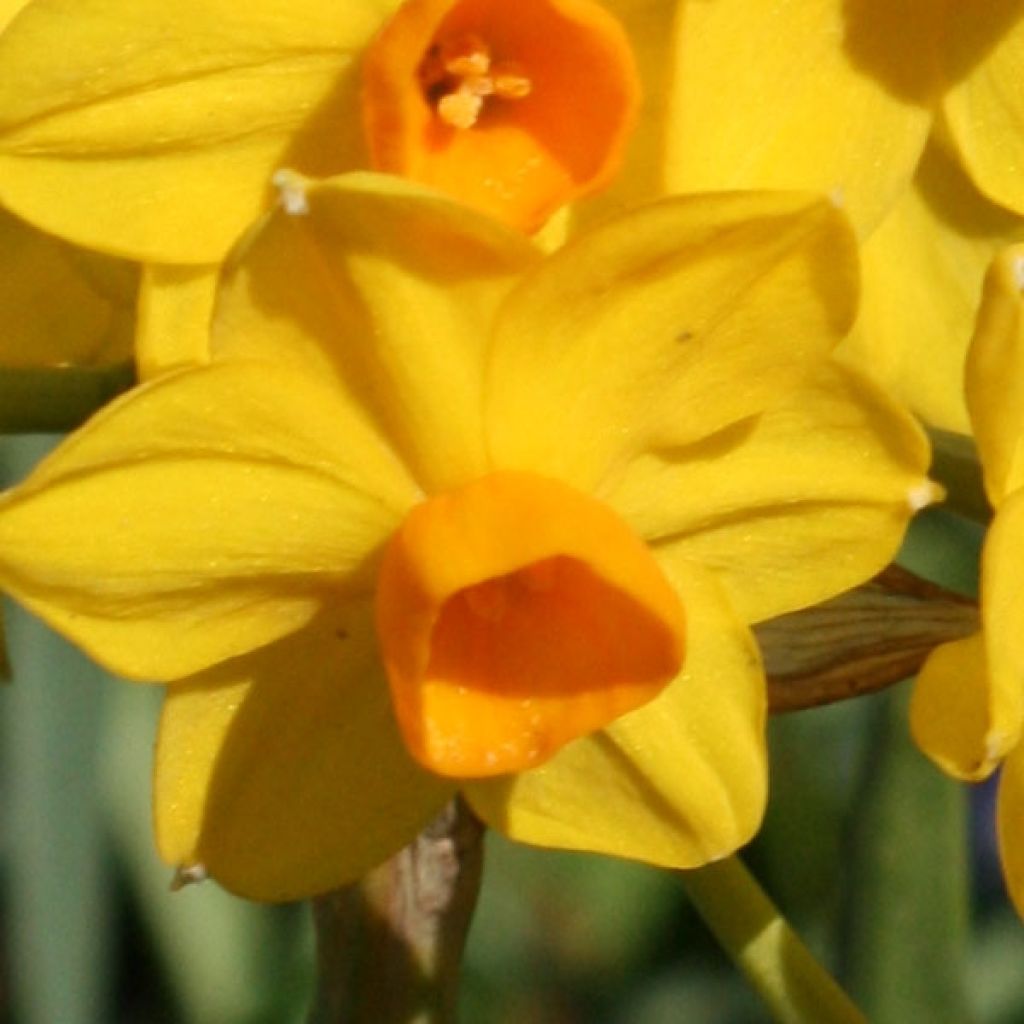

Narcisse Grand Soleil d Or
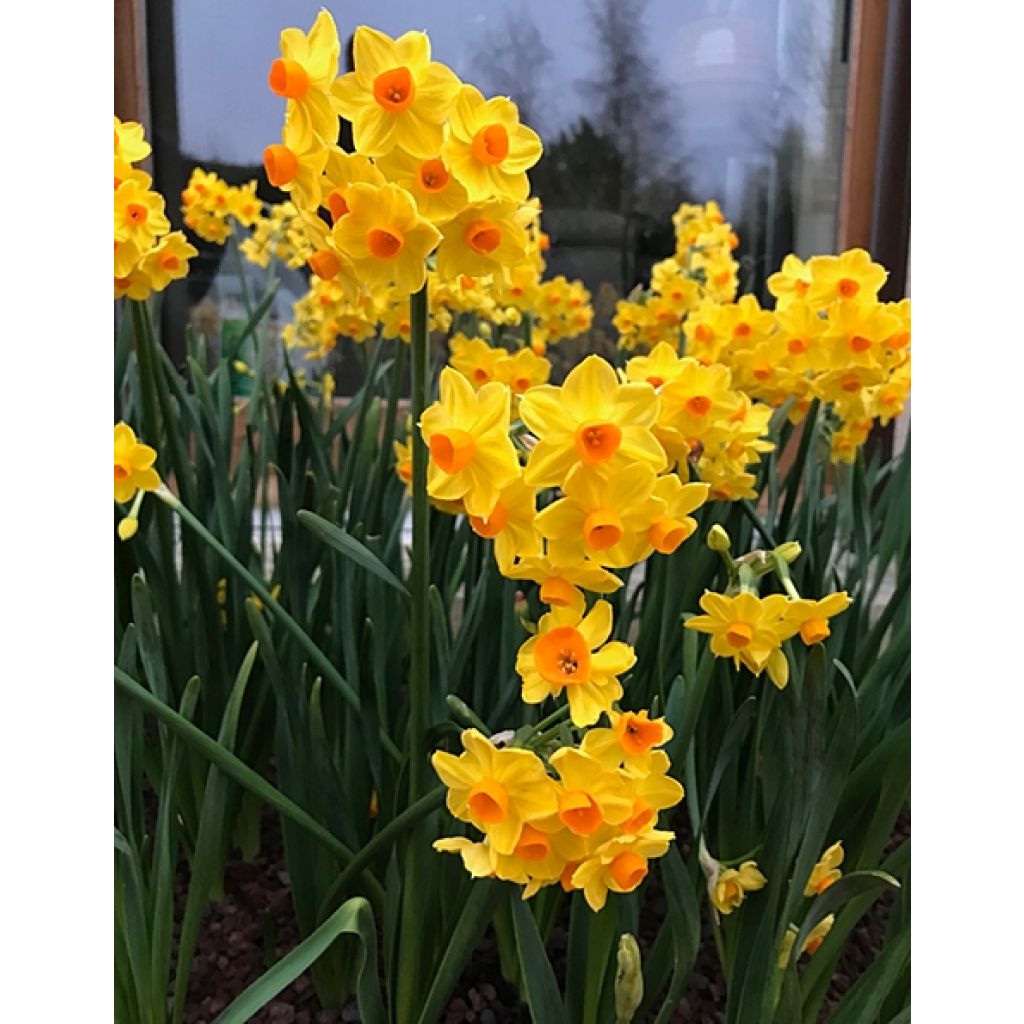

© Chouette
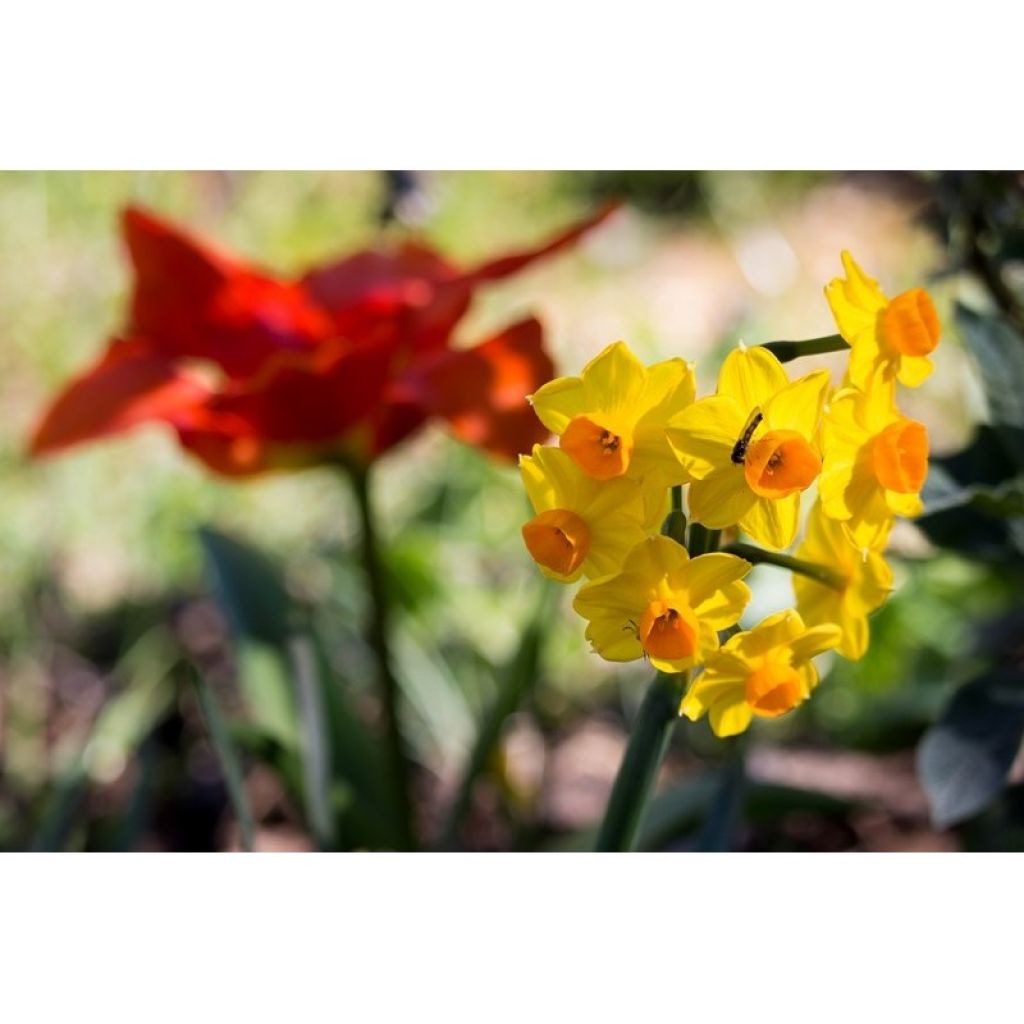

Narcissus Grand Soleil d'Or
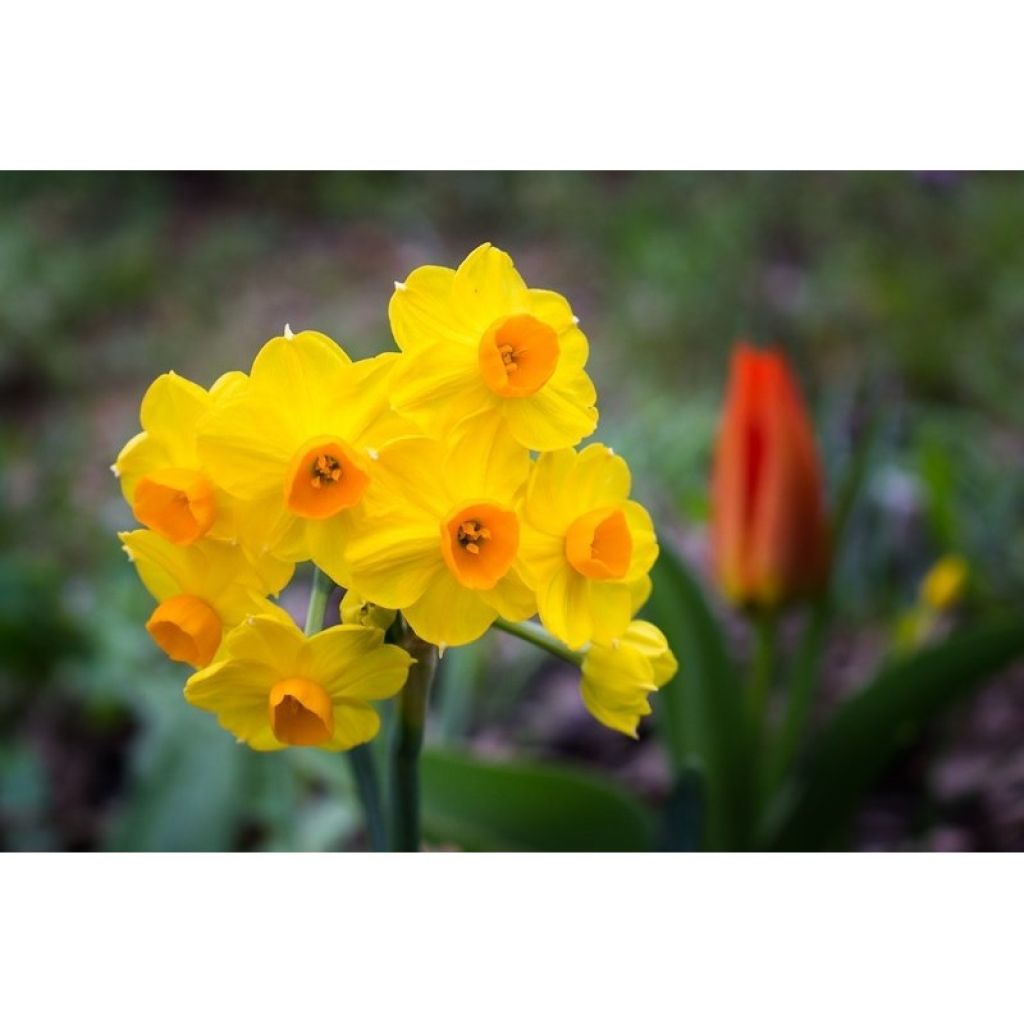

Narcissus Grand Soleil d'Or
Narcissus Grand Soleil d'Or
Narcissus tazetta Grand Soleil d Or
Paperwhite, Bunch-flowered Narcissus, Polyanthus Narcissus, Chinese Sacred Lily
This plant carries a 6 months recovery warranty
More information
We guarantee the quality of our plants for a full growing cycle, and will replace at our expense any plant that fails to recover under normal climatic and planting conditions.
From €5.90 for pickup delivery and €6.90 for home delivery
Express home delivery from €8.90.


Does this plant fit my garden?
Set up your Plantfit profile →
Description
Narcissus Grand Soleil d'Or was already blooming in Holland in 1770. It is a fantastic multiflowered variety, producing up to 20 small flowers per stem. From March onwards, they are eye-catching in the garden with their very bright colours, yellow for the corolla and orange for the small central crown, and have a sweet fragrance that seems to rise from the ground as soon as the sun appears. Belonging to the Tazetta narcissus family, they are easy to grow in the garden and indoors in a basket. They can also be grown in a pot on the terrace and are well suited for forcing indoors for flowering as early as Christmas.
Narcissus belong to the amaryllidaceae family. The Narcissus genus includes around 50 species found mainly in the western Mediterranean, but also in Africa and Asia. The 'Grand Soleil D'or' narcissus is a very old horticultural hybrid whose parent is N. Tazetta, a very robust plant native to the Mediterranean region, that adapts to various climates and conditions. 'Grand Soleil d'Or' is excellent in every way and received the Award of Garden Merit from the Royal Horticultural Society in England in 1977. It has given rise to 8 recent varieties. The plant produces a short and very sturdy stem, 30 to 40cm (12 to 16in) tall when in flower. Each stem bears 10 to 20 small, bicoloured, highly fragrant flowers, 4 to 5cm (2in) in diameter. The deciduous, linear foliage disappears in summer.
Grand Soleil d'Or narcissus is ideal for creating beautiful pots: use 5 bulbs for an 18cm (7in) diameter pot. There is such a variety of narcissus species that they can be enjoyed for three months in spring without ever getting bored. They can all naturalise easily, have a preference for yellow and white, and often emit sweet fragrances. These are all reasons to grow them in large clumps (at least 20 bulbs) for an enhanced effect. In natural flowerbeds, associate 'Grand Soleil d'Or' with scillas and anemones blanda, botanical tulips, forget-me-nots and small grasses like Stipa. A group of Tazetta narcissus in a pot placed near the house or even in a poorly heated room will diffuse an exceptional fragrance and they are simply perfect in bouquets.
Daffodil or Narcissus? Botanically speaking, daffodils are part of the narcissus family. They have flowers grouped in twos or more and their corolla forms a longer campanulate trumpet than the corolla is wide. The botanical species have the charm of wild plants and thrive in rockeries: N.bulbocodium, N. canaliculatus, N.juncifolius, N.pseudonarcissus, the simple wood daffodil, are among the prettiest. in vases, we advise against mixing daffodils with other flowers such as tulips, as the stems of daffodils contain a substance that quickly wilts other flowers. This detrimental effect on other flower types can be reduced by dipping the ends of the daffodil stems in hot water for 1 to 2 minutes.
Report an error about the product description
Narcissus Grand Soleil d'Or in pictures


Plant habit
Flowering
Foliage
Botanical data
Narcissus
tazetta
Grand Soleil d Or
Amaryllidaceae
Paperwhite, Bunch-flowered Narcissus, Polyanthus Narcissus, Chinese Sacred Lily
Cultivar or hybrid
Planting and care
This variety is easy to grow and flower at home, you just have to plant the bulbs and wait 6 weeks.
In the garden:
Narcissus tazetta is undemanding and grows in any well-drained and worked soil, even limestone, clay and dry in summer. The results are not as good in soils that are too wet or excessively acidic. The further south you go, the less demanding it will be on the nature of the soil. Plant the bulbs from September to mid-December, 15 cm (6in) deep and 8 cm (3in) apart, in a sunny or semi-shady location (at least 3 hours of sun per day). Left undisturbed, your daffodils will produce more and more flowers each year. To plant them in a lawn: remove a patch of turf, dig and loosen the soil to a depth of at least 20 cm (8in) (the height of a spade), place your bulbs, cover them with soil and replace the turf. Choose a place where you won't mow too early, as you must let the daffodil leaves wither before cutting them. It is a good idea to water in dry spells, during the flowering period. On the other hand, very wet summers are harmful to the bulbs, which may rot. Daffodils can generally remain in the ground, but the bulbs can be dug up once the foliage has turned yellow to protect them from excessively wet summers. Remove faded flowers to promote the accumulation of new reserves in the bulb. After flowering, let the foliage die naturally and only cut it when it turns yellow. If the clumps become too dense, they won't flower as well, so divide them from July to September when the leaves are dry. You can immediately replant the bulbs (if undamaged).
Planting period
Intended location
Care
-
, onOrder confirmed
Reply from on Promesse de fleurs
Haven't found what you were looking for?
Hardiness is the lowest winter temperature a plant can endure without suffering serious damage or even dying. However, hardiness is affected by location (a sheltered area, such as a patio), protection (winter cover) and soil type (hardiness is improved by well-drained soil).

Photo Sharing Terms & Conditions
In order to encourage gardeners to interact and share their experiences, Promesse de fleurs offers various media enabling content to be uploaded onto its Site - in particular via the ‘Photo sharing’ module.
The User agrees to refrain from:
- Posting any content that is illegal, prejudicial, insulting, racist, inciteful to hatred, revisionist, contrary to public decency, that infringes on privacy or on the privacy rights of third parties, in particular the publicity rights of persons and goods, intellectual property rights, or the right to privacy.
- Submitting content on behalf of a third party;
- Impersonate the identity of a third party and/or publish any personal information about a third party;
In general, the User undertakes to refrain from any unethical behaviour.
All Content (in particular text, comments, files, images, photos, videos, creative works, etc.), which may be subject to property or intellectual property rights, image or other private rights, shall remain the property of the User, subject to the limited rights granted by the terms of the licence granted by Promesse de fleurs as stated below. Users are at liberty to publish or not to publish such Content on the Site, notably via the ‘Photo Sharing’ facility, and accept that this Content shall be made public and freely accessible, notably on the Internet.
Users further acknowledge, undertake to have ,and guarantee that they hold all necessary rights and permissions to publish such material on the Site, in particular with regard to the legislation in force pertaining to any privacy, property, intellectual property, image, or contractual rights, or rights of any other nature. By publishing such Content on the Site, Users acknowledge accepting full liability as publishers of the Content within the meaning of the law, and grant Promesse de fleurs, free of charge, an inclusive, worldwide licence for the said Content for the entire duration of its publication, including all reproduction, representation, up/downloading, displaying, performing, transmission, and storage rights.
Users also grant permission for their name to be linked to the Content and accept that this link may not always be made available.
By engaging in posting material, Users consent to their Content becoming automatically accessible on the Internet, in particular on other sites and/or blogs and/or web pages of the Promesse de fleurs site, including in particular social pages and the Promesse de fleurs catalogue.
Users may secure the removal of entrusted content free of charge by issuing a simple request via our contact form.
The flowering period indicated on our website applies to countries and regions located in USDA zone 8 (France, the United Kingdom, Ireland, the Netherlands, etc.)
It will vary according to where you live:
- In zones 9 to 10 (Italy, Spain, Greece, etc.), flowering will occur about 2 to 4 weeks earlier.
- In zones 6 to 7 (Germany, Poland, Slovenia, and lower mountainous regions), flowering will be delayed by 2 to 3 weeks.
- In zone 5 (Central Europe, Scandinavia), blooming will be delayed by 3 to 5 weeks.
In temperate climates, pruning of spring-flowering shrubs (forsythia, spireas, etc.) should be done just after flowering.
Pruning of summer-flowering shrubs (Indian Lilac, Perovskia, etc.) can be done in winter or spring.
In cold regions as well as with frost-sensitive plants, avoid pruning too early when severe frosts may still occur.
The planting period indicated on our website applies to countries and regions located in USDA zone 8 (France, United Kingdom, Ireland, Netherlands).
It will vary according to where you live:
- In Mediterranean zones (Marseille, Madrid, Milan, etc.), autumn and winter are the best planting periods.
- In continental zones (Strasbourg, Munich, Vienna, etc.), delay planting by 2 to 3 weeks in spring and bring it forward by 2 to 4 weeks in autumn.
- In mountainous regions (the Alps, Pyrenees, Carpathians, etc.), it is best to plant in late spring (May-June) or late summer (August-September).
The harvesting period indicated on our website applies to countries and regions in USDA zone 8 (France, England, Ireland, the Netherlands).
In colder areas (Scandinavia, Poland, Austria...) fruit and vegetable harvests are likely to be delayed by 3-4 weeks.
In warmer areas (Italy, Spain, Greece, etc.), harvesting will probably take place earlier, depending on weather conditions.
The sowing periods indicated on our website apply to countries and regions within USDA Zone 8 (France, UK, Ireland, Netherlands).
In colder areas (Scandinavia, Poland, Austria...), delay any outdoor sowing by 3-4 weeks, or sow under glass.
In warmer climes (Italy, Spain, Greece, etc.), bring outdoor sowing forward by a few weeks.



































